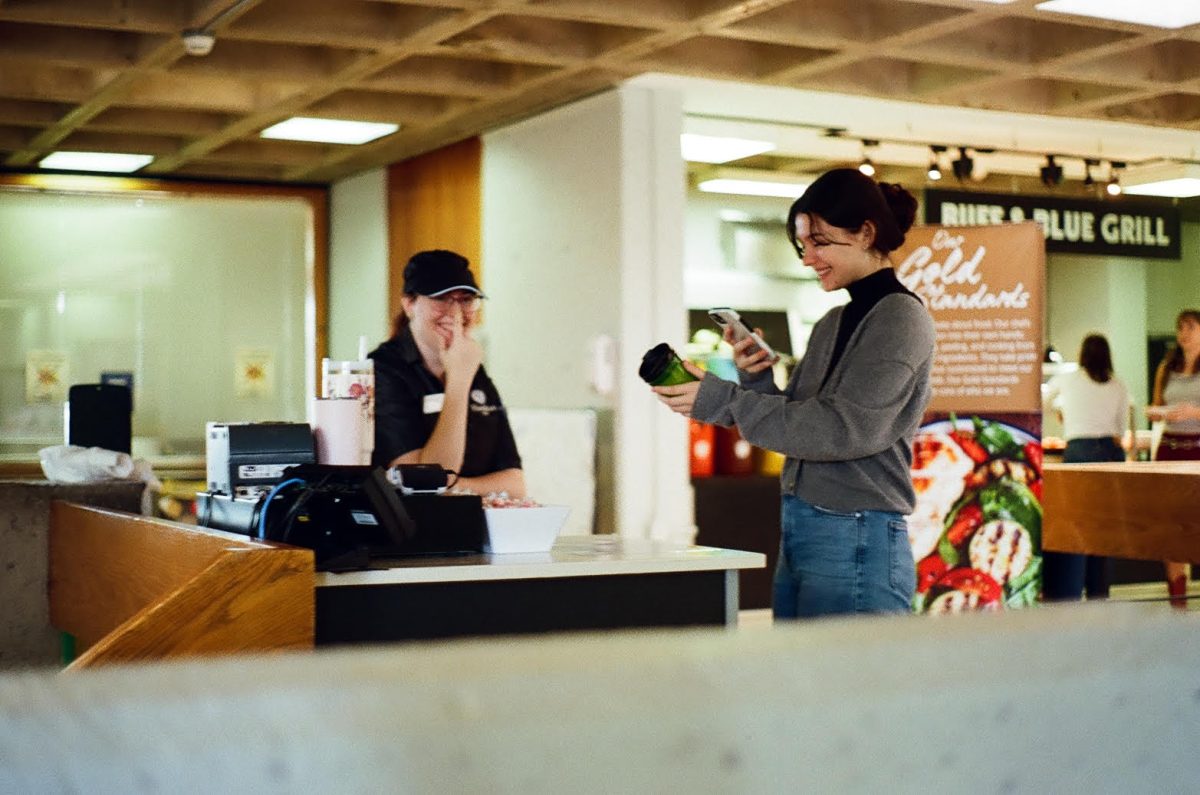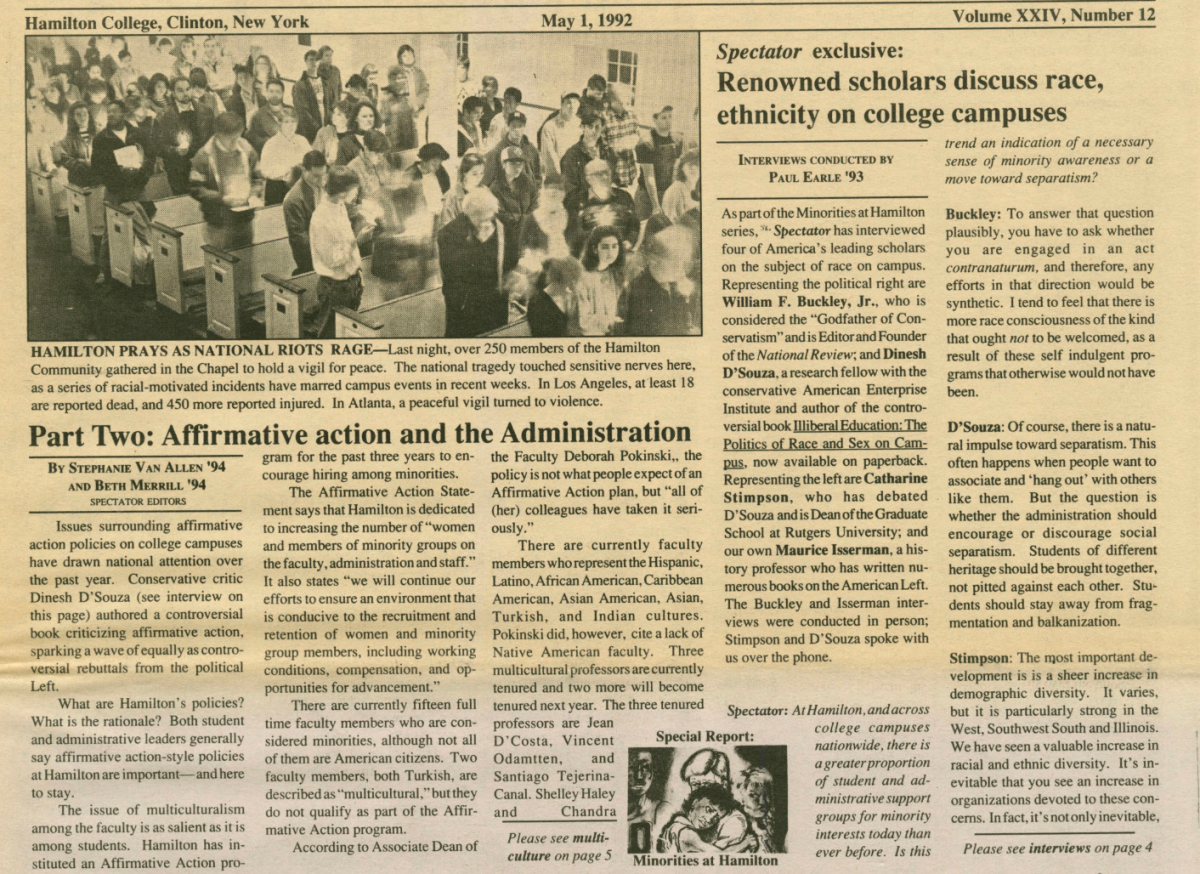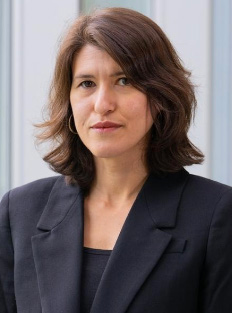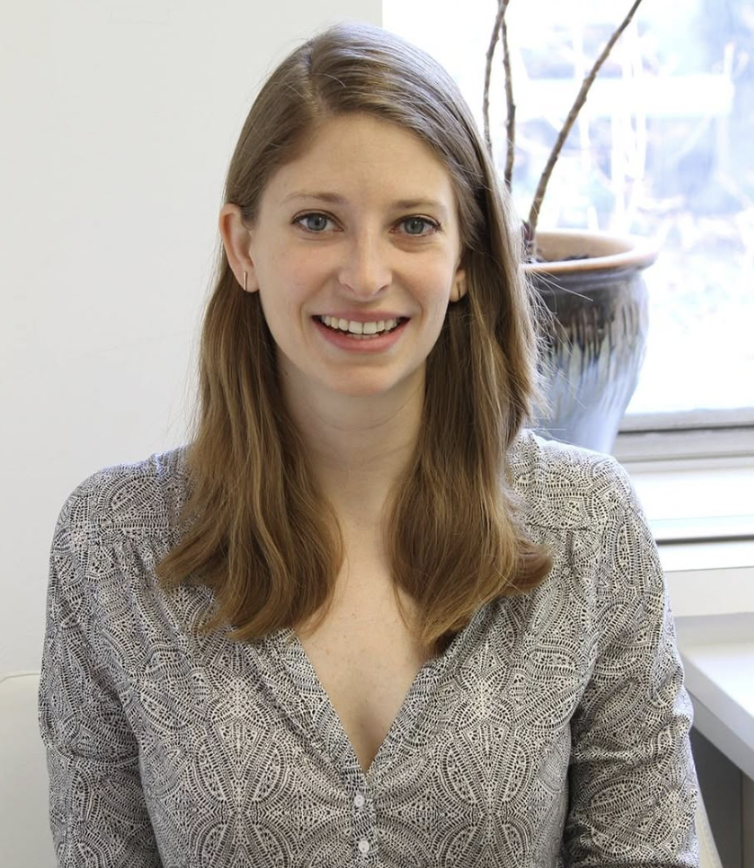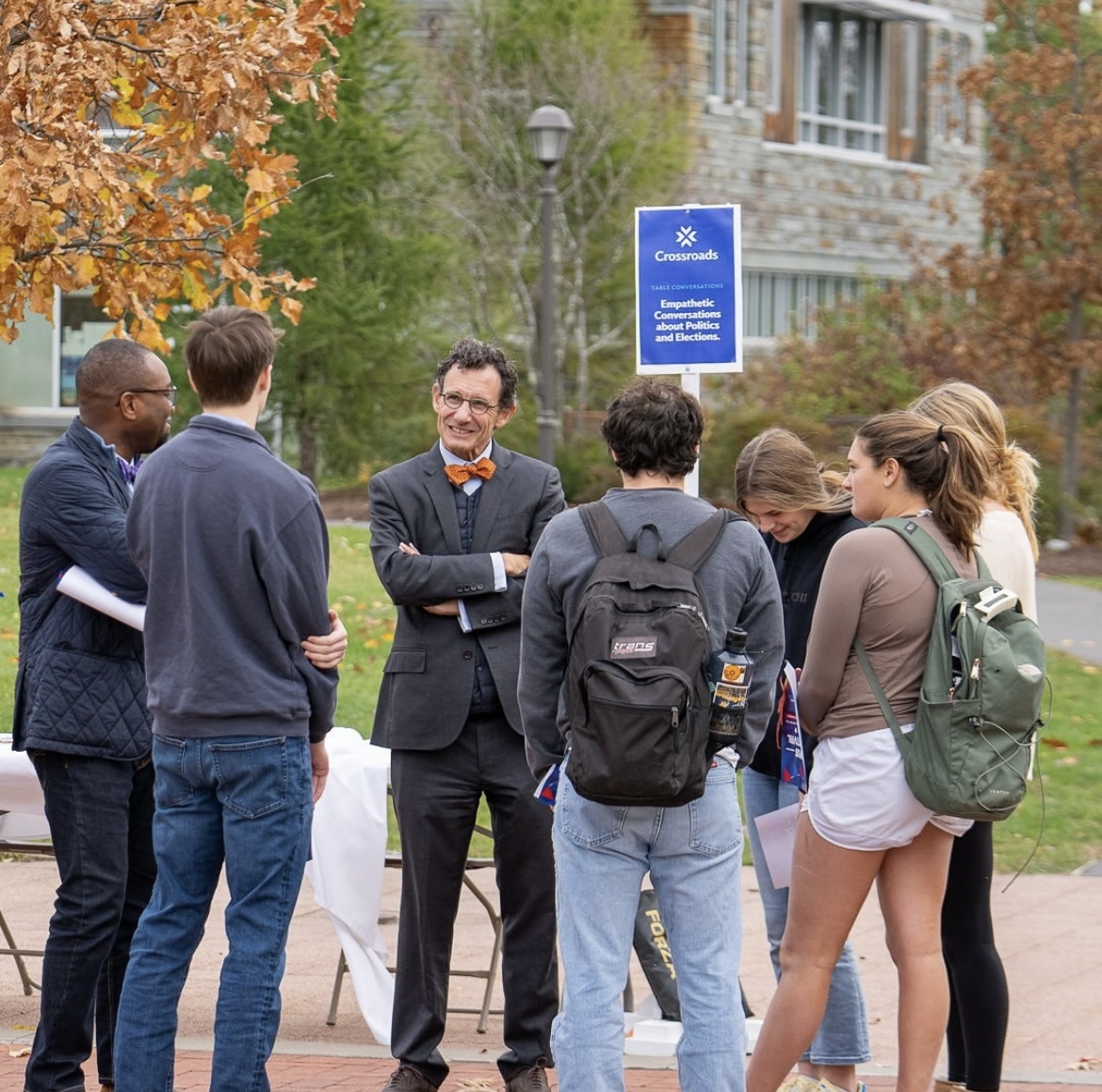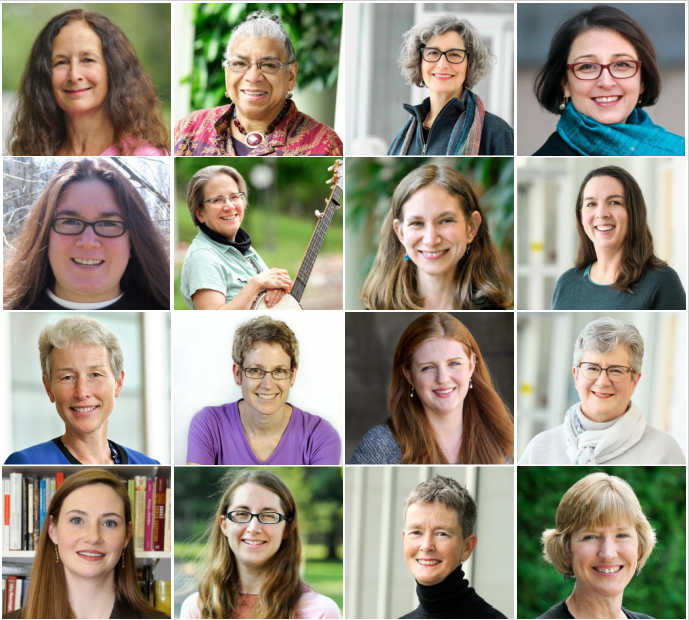
For Women’s History Month,
The Spectator
pays tribute to Hamilton’s female-identifying department chairs, who undoubtedly faced challenges along their path to the top of their discipline. In fact, according to a study in 2019, women only make up 18% of department heads across the United States (Paturel 2019). Of the 29 departments, 11 currently have female-identifying heads and of the 18 interdisciplinary programs, there are four.
Although the opportunity to speak with all seventeen leaders would have been wonderful, I was able to sit down with two: Professor Karen Brewer — Chair and Silas D. Childs Professor of Chemistry, and Professor Shelley Haley — the Edward North Chair of Classics and Professor of Africana studies. Yet this article is dedicated to all female department heads: Professor Elaine Heekin of the Dance & Movement Studies Department, Professor Anne Owens of the Economics Department, Professor Sharon Rivera of the Government Department, Professor Jessica Burke of the Hispanic Studies Department, Professor Lisa Trivedi of the History Department, Professor Naomi Guttman of Literature & Creative Writing Department, Professor Sally Cockburn of Mathematics & Statistics Department, Professor Jen Borton of the Psychology Department, Professor Anne Lacsamana of the Women’s and Gender Studies Department and Professor Lydia Hamessley of the Music Department. This article is also dedicated to all female-identifying interdisciplinary program directors: Professor Gbemende Johnson of Jurisprudence Law and Justice Studies, Professor Alexandra List Director of Neuroscience, Professor Katherine Terrell Director of Medieval/Renaissance Studies, Professor Heather Sullivan Director of Latin American Studies and Professor Ella Gant Director of Digital Arts.
Although chemistry and Africana studies are two seemingly unconnected disciplines, Professor Brewer and Professor Haley are both minorities in their fields; Brewer as a woman in STEM and Haley as an African-American woman in classics.
Professor Brewer joined the Hamilton College faculty in 1989. Behind her, on Zoom she has a collection of dolls, set up for Women’s History Month. Each doll is a notable woman historical figure: Harriet Tubman, Marie Curie, Michelle Obama, Ada Lovelace, Virginia Woolf, Ruth Bader Ginsburg and Rosie the Riveter. When Professor Brewer arrived at Hamilton, she was the first woman hired in the Chemistry Department and the first to be tenured. At the time, she noted that “one-third of the students in her introduction to Chemistry class were women and now it is over 50% always.”
As the number of women in STEM slowly grew, Brewer has watched the difference between male and female students become more equal, though there is still space to improve. Despite popular belief, Brewer stated that during the year she graduated college there “was 20–25% women [within her STEM courses] and now it is maybe about 30%.” While women are well-represented in biochemistry, there are few women in organic chemistry and even fewer women who enter into academics as compared to industry jobs.
Brewer explains that “a lot of women get discouraged from doing STEM pretty much from middle school on. All little kids love science and want to be scientists, but they are subtly discouraged. It’s also that women are always doing some sort of calculus of what their lives will be like and that’s a really hard calculus when it is a full time job and there is inadequate child care. Women think about life outside of their career in a way males just are not conditioned to.”
Brewer noted that the pandemic has really shown the substantial degree to which women are still the caregivers, even in a two parent working household. In the last year alone there was a substantial decline in the number of submissions to journals and research articles in the sciences by women.
We closed out our conversation with a discussion of Brewer’s favorite accomplishment: being a part of the committee that implemented the Social, Structural, and Institutional Hierarchies (SSIH) requirement. Most notably, Professor Brewer explained the advice she gave to her college self: “pick the battles you need to fight and the ones you care about the most. This way, you will be the happiest.”
I spoke with Professor Shelley Haley next, who just became the first African-American woman to be President of the Society for Classics Studies. Haley’s journey was remarkable, as traditionally classics has been and in some ways still are a field of predominantly white men. Haley’s experience with classics began with learning Latin in high school — as such, she refers to herself as an “accidental classicist.” What really fascinates Haley is the late social history of the Roman Republic and the beginning of that empire. Haley remarks that while she is a traditionally trained classicist, “[she] does bring a different lens to it because [she is] a woman of African descent. So, [she] always tries to look for the silences… particularly when [she is] teaching a translation, to emphasize that you are reading someone else’s interpretation of the original.”
Professor Shelley then spoke on her experiences as department head, and how the Classics Department is evenly split between men and women who share a lot of the same views, which makes it an interesting and wonderful department to chair. Though Haley remarks that the field has changed tremendously and it was the older scholars early on in her career who lacked the progressiveness of classics scholars today. She believes that “the younger scholars are far more open to looking at the ancient world for the multiracial and multicultural place that it was instead of this kind of basin of whiteness, which up until the nineties that is how [classics] really was. If you dared to talk about race or racial difference, you were told we do not need to talk about that because we are classicists.”
As for Women’s History Month, Haley says she is not explicitly “celebrating,” but she did send out emails to each of her friends on International Women’s Day to tell them how much she admired them and enjoyed their friendship. On the note of other women, Haley admires her Latin teacher who is now in her late 80s, and she modeled her teaching style on hers. In general, writer and civil rights activist Audre Lorde is Haley’s “guiding star.” As for authors, Octavia Butler’s novels are the ones that she would, in her own words, “most like to be stranded with on a desert island” with. We concluded our interview with a piece of advice for college-aged women today: “Don’t worry about what other people think. You have to follow your heart.”
Both chairwomen, incidentally, came to the Hill in 1989 and both have paved the way in their fields and made a lasting difference on Hamilton’s campus. To many more women in department chair positions and to all the women educators of Hamilton: Thank you.


